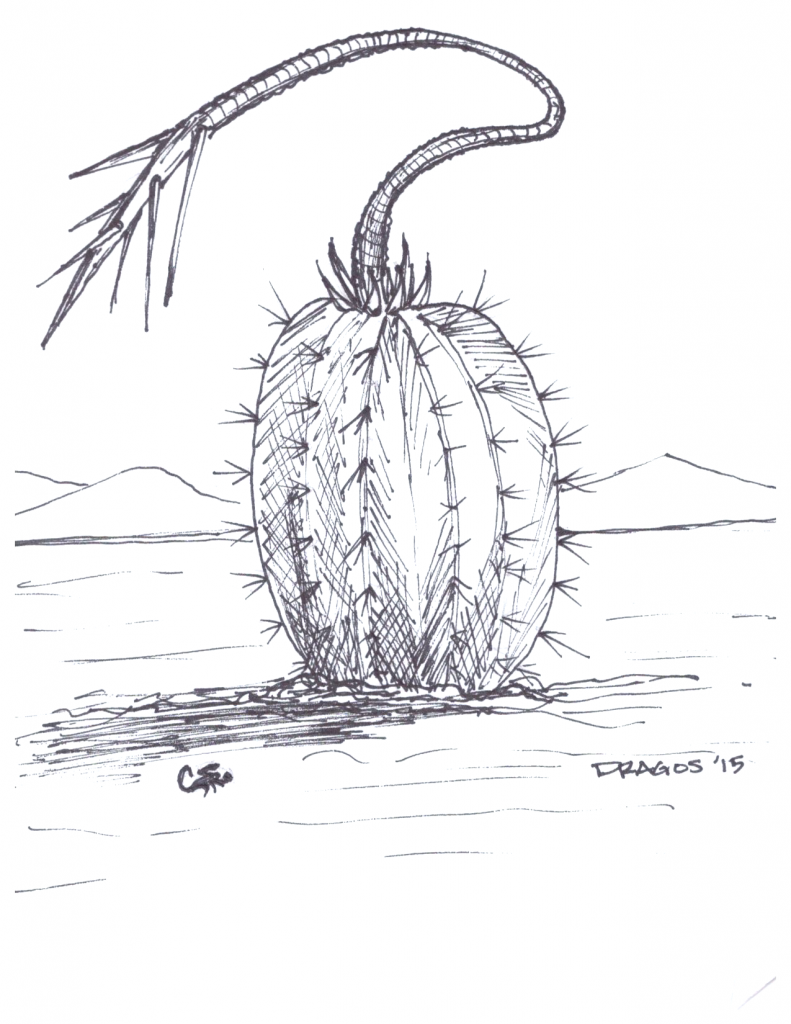I was looking at my publisher’s to-do list when I realized there was some overlap between a couple of items on the list. Specifically “Convert Deadly Gardens Monsters to PF2” and “Determine monster list for Tombstone Gazetteer” had some synergy. A few of the unique plant monsters from the Deadly Gardens line would fit perfectly in the Southwestern American desert of Tombstone! They just needed to be converted from Pathfinder RPG to Pathfinder Second Edition.
For those interested in converting PF1 monsters to the new system, there are monster building rules in the new Game Mastery Guide from Paizo. There are even guidelines for converting monsters. I think the most important piece of advice is to not just port the ability modifiers straight across but to use the PF2 guidelines that fit your monster’s concept as there are less extremely low stats and extremely high stats in PF2.
I actually ended up just rebuilding the monster using the second edition guidelines for stats, hit points, AC and attacks and then converted the special abilities. It didn’t take long at all since the process is much quicker in second edition.
So here is the Scorpion Cactus, the first one to be converted. Consider this a preview of both the Tombstone Gazetteer bestiary section and Deadly Gardens Book I for Pathfinder Second Edition.
Scorpion Cactus
This barrel-shaped cactus plant has a long, sinuous vine growing from its top that sports a clump of large spike-like needles at the end.

Found primarily in warm arid and desert climates the so-called scorpion cactus is well adapted for survival in that environment. It has a barrel-shaped base that is hollow and stores moisture-rich nectar to use as needed. The plant gets its name from the long vine that grows from the top of the base and is capped with a cluster of spike-like needles. The scorpion cactus can strike with this vine like a scorpion with its tail. The cactus’ needles, both at the tip of the vine and on the base, are coated with a toxic resin. The scorpion cactus can also expel the excess heat that it absorbs from its environment in a concentrated burst that drives away most animals interested in getting at the nectar stored within the plant. The scorpion cactus can move, although at a very slow pace. They won’t move more than 30 feet in a day without a compelling reason.
Those wise in the ways of the desert claim that the nectar stored within the base of the cactus is more than just a source of water in the desert. Some claim that it has powerful curative properties. There is a thriving market for scorpion cactus nectar in some desert cities which leads to many unscrupulous merchants selling questionable or counterfeit substances.
Scorpion Cactus Creature 3
Uncommon N Medium Plant Mindless
Perception +8, low-light vision
Skills Athletics +9
Str +3, Dex +1, Con +4, Int –2, Wis +1, Cha +0
AC 16; Fort +10, Ref +6, Will +8
HP 42; Immunities mental; Resistances fire 5
Attack of Opportunity [reaction] Stinger only.
Speed 5 feet
Melee [one-action] Stinger +10 (agile, reach 15 feet); Damage 1d6+5 piercing plus toxic resin and Knockdown
Ranged [one-action] Needles +8 (range increment 20 ft.) Damage 1d6+5 piercing plus toxic resin
Mirage [one-action] A scorpion cactus can release waves of intense heat which cause 1 point of fire damage to any creature within 10 feet. The waves of heat create a distortion effect around the scorpion cactus that cause it to become Hidden until its next turn.
Toxic Resin (poison); Saving Throw DC 16 Fortitude; Maximum Duration 6 rounds; Stage 1 1d6 poison damage and stunned 1 (1 round); Stage 2 2d6 poison damage and stunned 2 (1 round)
Thanks for Reading. Let me know what you think in the comments!
Open Game License (see entire license)
Section 15. COPYRIGHT NOTICE
Open Game License v 1.0a Copyright 2000, Wizards of the Coast, Inc. System Reference Document © 2000, Wizards of the Coast, Inc; Authors: Jonathan Tweet, Monte Cook, and Skip Williams, based on material by E. Gary Gygax and Dave Arneson.
Pathfinder Roleplaying Game Core Rulebook. Copyright 2009, Paizo Inc.; Author: Jason Bulmahn, based on material by Jonathan Tweet, Monte Cook, and Skip Williams.
The Book of Experimental Might. Copyright 2008, Monte J. Cook. All rights reserved.
Tome of Horrors. Copyright 2002, Necromancer Games, Inc.; Authors: Scott Greene, with Clark Peterson, Erica Balsley, Kevin Baase, Casey Christofferson, Lance Hawvermale, Travis Hawvermale, Patrick
Lawinger, and Bill Webb; Based on original content from TSR.
Pathfinder RPG Bestiary, © 2009, Paizo Publishing, LLC; Author: Jason Bulmahn, based on material by Jonathan Tweet, Monte Cook, and Skip Williams.
Pathfinder RPG GameMastery Guide, © 2010, Paizo Publishing, LLC; Author: Cam Banks, Wolfgang Baur, Jason Bulmahn, Jim Butler, Eric Cagle, Graeme Davis, Adam Daigle, Joshua J. Frost, James Jacobs, Kenneth Hite, Steven Kenson, Robin Laws, Tito Leati, Rob McCreary, Hal Maclean, Colin McComb, Jason Nelson, David Noonan, Richard Pett, Rich Redman, Sean K Reynolds, F. Wesley Schneider, Amber Scott, Doug Seacat, Mike Selinker, Lisa Stevens, James L. Sutter, Russ Taylor, Penny Williams, Skip Williams,
Teeuwynn Woodruff.
Deadly Gardens: Phoenix Lily. © 2015, Rusted Iron Games; Author: Russ Brown.
Deadly Gardens: Scorpion Cactus. © 2015, Rusted Iron Games; Author: Russ Brown.
Rusted Iron Games Website. © 2020, Rusted Iron Games; Author: Russ Brown

Just happened upon this. Really cool you were able to adapt it into your Tombstone rules!
Thank you for using my original art! It’s amazing how far a few scribbles on a napkin can go!
Cheers!